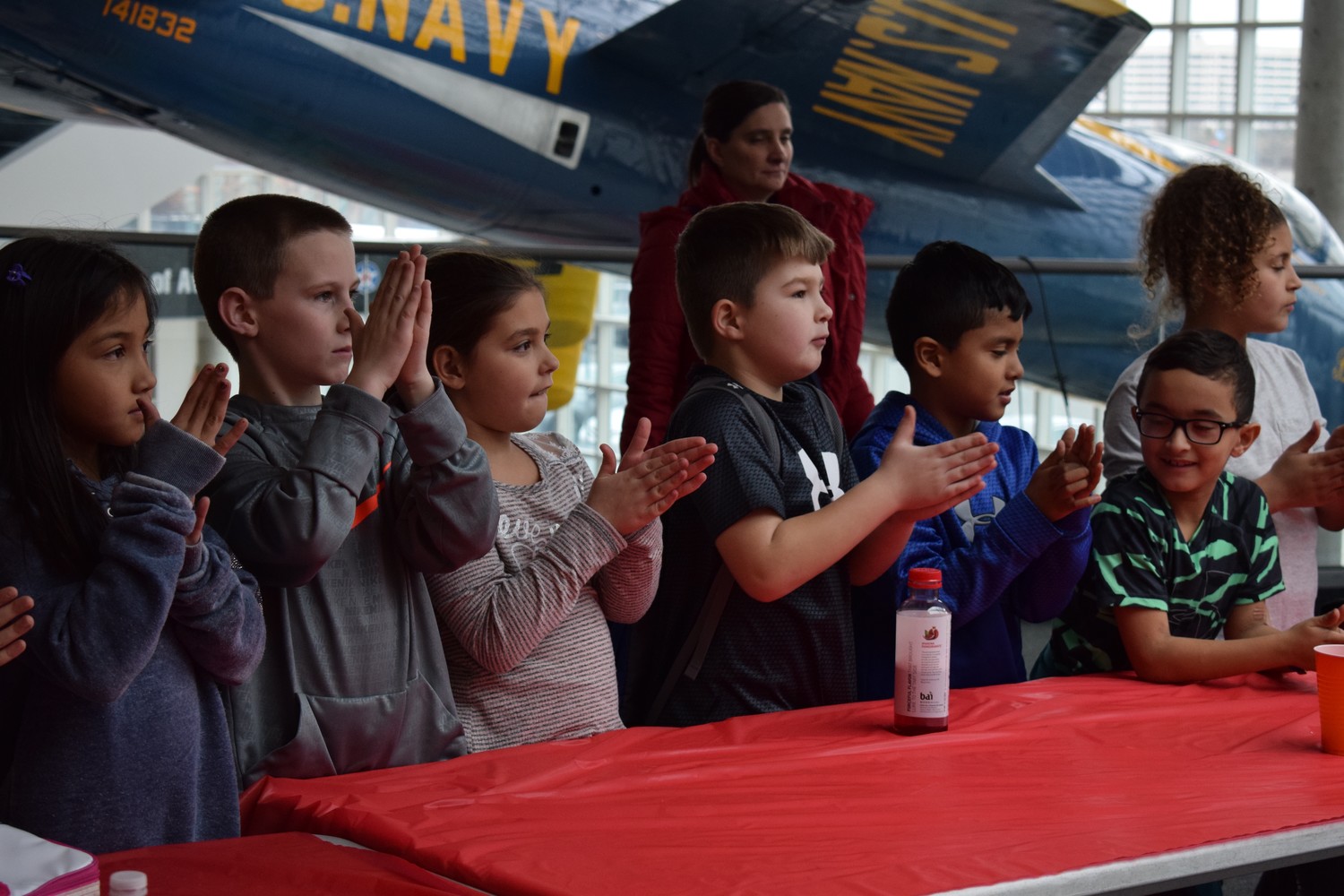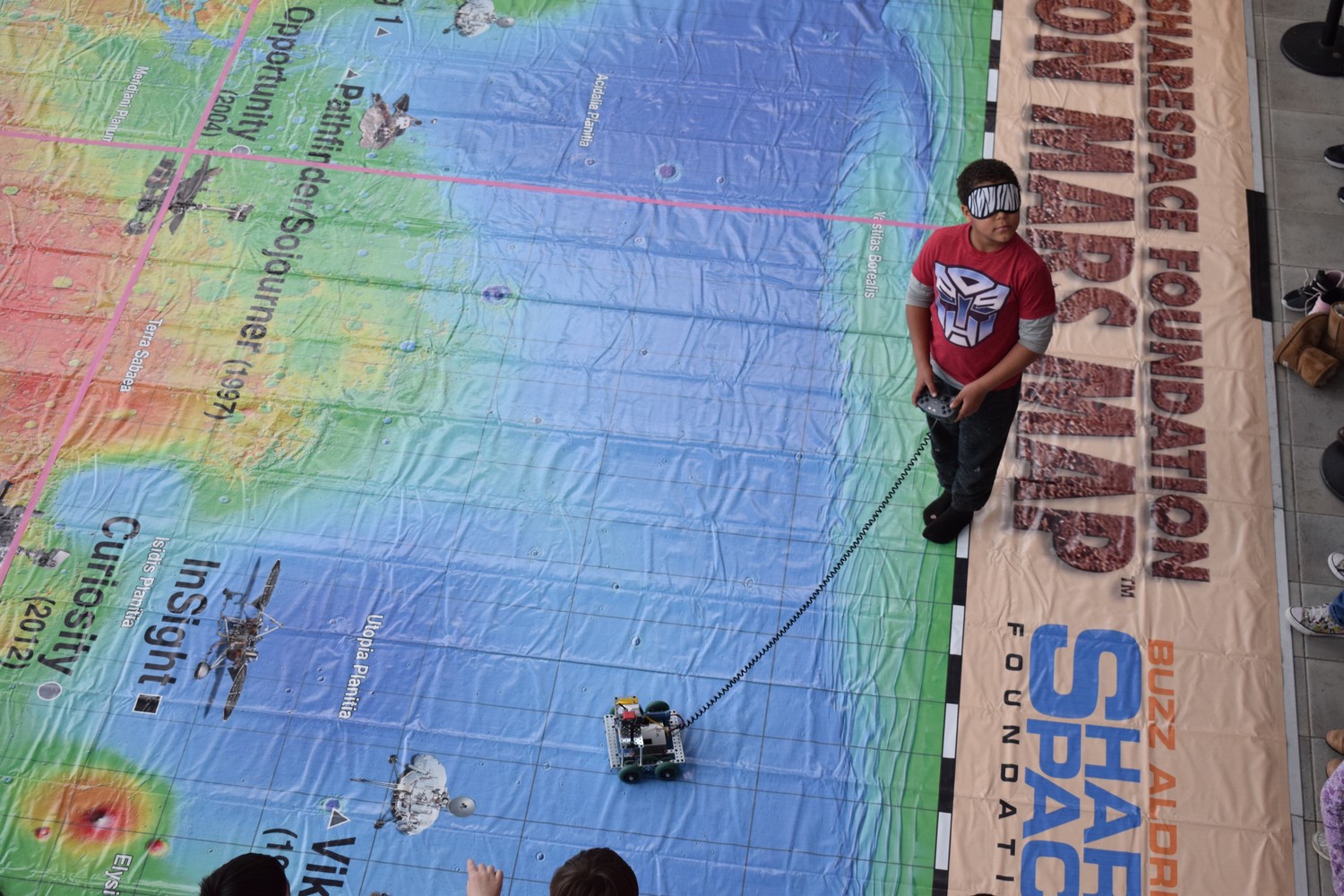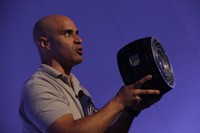The future of space discovery
NASA engineer talks Mars exploration
“Blast off!” screamed the group of third-graders from Polk Street Elementary School in Franklin Square as they watched footage of the successful launch of the Mars rover Spirit at the Cradle of Aviation Museum in Garden City on Feb. 6.
Meanwhile, Kobie Boykins, a mechanical engineer with NASA’s Jet Propulsion Laboratory who helped build the rover, talked them through each step of his team’s process to ensure that a rover makes it safely to the planet. The students appeared surprised to learn that Spirit landed on Mars awkwardly, bouncing across its surface before coming to a stop, as if in a cartoon.
“I thought all the steps on how to get the rover to land were cool,” student Salvatore D’Amato said. “There were so many things they needed to do just to make sure it landed OK.”
D’Amato was among the more than 400 young people from a number of Nassau County schools who came to the Cradle of Aviation Museum for a full day of interactive activities inspired by Mars exploration. Children listened attentively in the museum’s planetarium as Boykin detailed his personal experiences in designing rovers, including the Mars Science Laboratory rover Curiosity. Boykin also shared photographs of Mars and the four rovers that have landed on the red planet, and spoke of the presence of water there, adding that the planet could once have sustained life.
“Hopefully for these students, this is a stepping stone for them to believe, hey, I can do this too,” Boykin said of their experience at the museum. He said he hopes “they can connect in a way that’s not like watching TV.”
Younger students simulated the technology used to shield the rover from extreme heat as it enters Mars’s atmosphere with paper plates and aluminum foil. The activities helped think out of the box to use creative solutions to engage in science and engineering.
Jane Coelho, a Polk Street third-grade teacher, said she jumped at the opportunity when her class was invited to the event. “My hope is that this will expand their already piqued interest in space travel and Mars,” she said.
Two of Coelho’s students, Juliette Burke and Kayla Dill, said they were surprised and thrilled by their day at the Cradle of Aviation Museum. “I loved the whole story behind how Curiosity, Spirit and Opportunity got their names,” Burke said, mentioning the children’s essay contests that NASA began in order to pick the names for the rovers. “Curiosity was named by a girl my age. That’s so cool.”
“I liked that the rover could take selfies,” Dill said. “And it even had a laser.”
Boykins said he is passionate about brining space exploration to life for young people by connecting them with astronauts and engineers. “It’s easy to read a book,” he said, “but you can’t always connect with a book. You can’t always connect with a video of somebody, but seeing them live and being able to interact, I think that’s where you get that connection. I think that’s a beautiful thing.”

 41.0°,
Fair
41.0°,
Fair 









